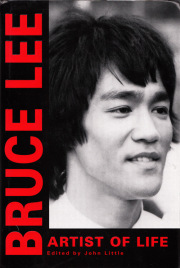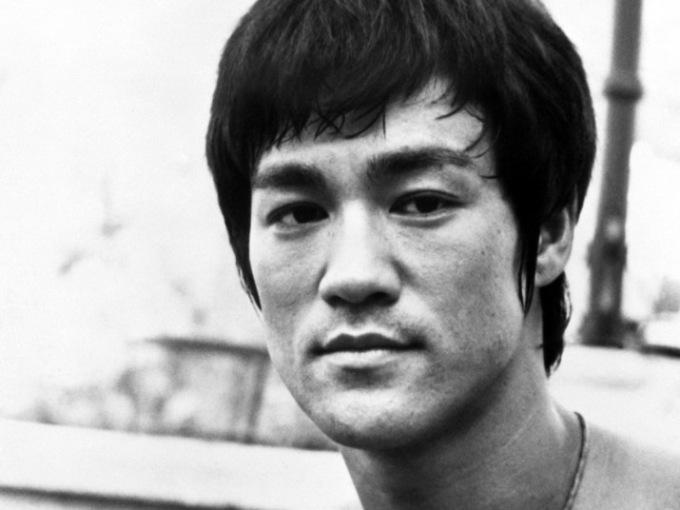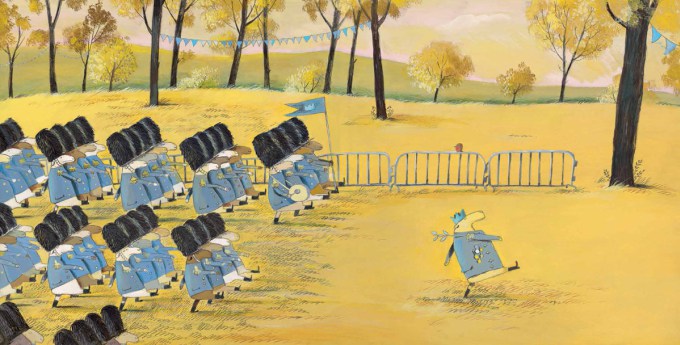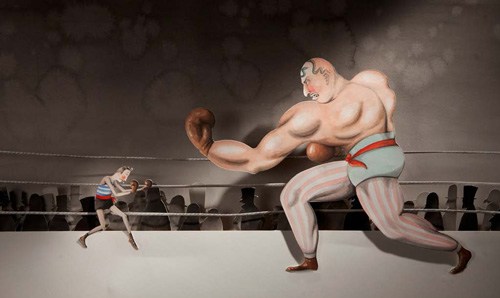Bruce Lee on Self-Actualization and the Crucial Difference between Pride and Self-Esteem
INSPIRATIONAL, 21 Dec 2015
Maria Popova, Brain Pickings – TRANSCEND Media Service
“The less promise and potency in the self, the more imperative is the need for pride. The core of pride is self-rejection.”
 “Real self-esteem is an integration of an inner value with things in the world around you,” Anna Deavere Smith wrote in her invaluable advice to young artists. But how does one master the intricacies of that integration?
“Real self-esteem is an integration of an inner value with things in the world around you,” Anna Deavere Smith wrote in her invaluable advice to young artists. But how does one master the intricacies of that integration?
That’s what legendary Chinese-American martial artist, philosopher, and filmmaker Bruce Lee (November 27, 1940–July 20, 1973) explores in one of the pieces collected in Bruce Lee: Artist of Life (public library) — the invaluable compendium of his never-before-published private letters, notes, essays, and poems that also gave us the origin of his famous metaphor for resilience.
In an essay titled “The Passionate State of Mind,” Lee writes:
We can see through others only when we see through ourselves.
Lack of self-awareness renders us transparent; a soul that knows itself is opaque.
[…]
To become different from what we are, we must have some awareness of what we are… Yet it is remarkable that the very people who are most self-dissatisfied and crave most for a new identity have the least self-awareness. They have turned away from an unwanted self and hence never had a good look at it. The result is that those most dissatisfied can neither dissimulate nor attain a real change of heart. They are transparent, and their unwanted qualities persist through all attempts at self-dramatization and self-transformation.
Our lack of self-awareness, Lee argues, makes us look to others to tell us who we are. (Learning not to do that is one of life’s hardest, most important lessons.) He considers the perilous yet profoundly human impulse for conformity:
We have more faith in what we imitate than in what we originate. We cannot derive a sense of absolute certitude from anything that has its roots in us. The most poignant sense of insecurity comes from standing alone; we are not alone when we imitate. It is thus with most of us! We are what other people say we are. We know ourselves chiefly by hearsay.
Echoing Anaïs Nin’s memorable meditation on character and personal responsibility, Lee points out that this tendency is what dogma preys on:
There is a powerful craving in most of us to see ourselves as instruments in the hands of others and thus free ourselves from the responsibility for acts that are prompted by our own questionable inclinations and impulses. Both the strong and the weak grasp at the alibi. The latter hide their malevolence under the virtue of obedience; they acted dishonorably because they had to obey orders. The strong, too, claim absolution by proclaiming themselves the chosen instrument of a higher power — God, history, fate, nation, or humanity.
At the root at our misguided grasping at self-worth, Lee asserts, is a confusion between pride and self-esteem. He examines the crucial difference between the two:
Pride is a sense of worth derived from something that is not part of us, while self-esteem derives from the potentialities and achievements of self. We are proud when we identify ourselves with an imaginary self, a leader, a holy cause, a collective body of possessions. There is fear and intolerance in pride; it is insensitive and uncompromising. The less promise and potency in the self, the more imperative is the need for pride. The core of pride is self-rejection.
We acquire a true sense of self-worth, Lee notes, by examining ourselves in order to identify our talents — Epictetus’s notion of self-scrutiny applied with kindness comes to mind — and then working hard to realize them. This purposeful drive for self-actualization, nowhere more beautifully articulated than in Thomas Wolfe’s letters to his mother, is the true wellspring of self-esteem. Lee writes:
Action is a high road to self-confidence and [self-]esteem. Where it is open, all energies flow toward it. It comes readily to most people and its rewards are tangible.
And yet self-esteem isn’t a static object to be attained but a dynamic sense to be continually cultivated:
The maintenance of self-esteem is a continuous task that taxes all of the individual’s power and inner resources. We have to prove our worth and justify our existence anew each day.
In a sentiment all the more poignant amid our age of rampant shootings and mass malevolence, Lee considers how seductive the illusory substitutes for self-esteem become in its absence:
When, for whatever reason, self-esteem is unattainable, the autonomous individual becomes a highly explosive entity. He turns away from an unpromising self and plunges into the pursuit of pride — the explosive substitute for self-esteem. All social disturbances and upheavals have their roots in a crisis of individual self-esteem, and the great endeavors in which the masses most readily unite [are] basically a search for pride.
Complement the altogether fantastic Bruce Lee: Artist of Life with Lee on how to find power in repose and strength in yielding, then revisit Anne Lamott on how to stop keeping ourselves small by people-pleasing and Nietzsche on the journey of becoming oneself.
__________________________________
Brain Pickings is the brain child of Maria Popova, an interestingness hunter-gatherer and curious mind at large obsessed with combinatorial creativity who also writes for Wired UK and The Atlantic, among others, and is an MIT Futures of Entertainment Fellow. She has gotten occasional help from a handful of guest contributors.
Go to Original – brainpickings.org
DISCLAIMER: The statements, views and opinions expressed in pieces republished here are solely those of the authors and do not necessarily represent those of TMS. In accordance with title 17 U.S.C. section 107, this material is distributed without profit to those who have expressed a prior interest in receiving the included information for research and educational purposes. TMS has no affiliation whatsoever with the originator of this article nor is TMS endorsed or sponsored by the originator. “GO TO ORIGINAL” links are provided as a convenience to our readers and allow for verification of authenticity. However, as originating pages are often updated by their originating host sites, the versions posted may not match the versions our readers view when clicking the “GO TO ORIGINAL” links. This site contains copyrighted material the use of which has not always been specifically authorized by the copyright owner. We are making such material available in our efforts to advance understanding of environmental, political, human rights, economic, democracy, scientific, and social justice issues, etc. We believe this constitutes a ‘fair use’ of any such copyrighted material as provided for in section 107 of the US Copyright Law. In accordance with Title 17 U.S.C. Section 107, the material on this site is distributed without profit to those who have expressed a prior interest in receiving the included information for research and educational purposes. For more information go to: http://www.law.cornell.edu/uscode/17/107.shtml. If you wish to use copyrighted material from this site for purposes of your own that go beyond ‘fair use’, you must obtain permission from the copyright owner.


